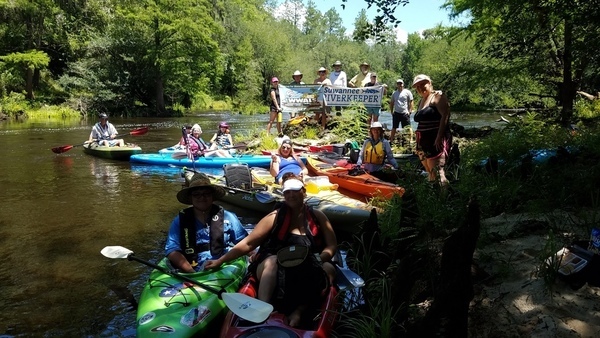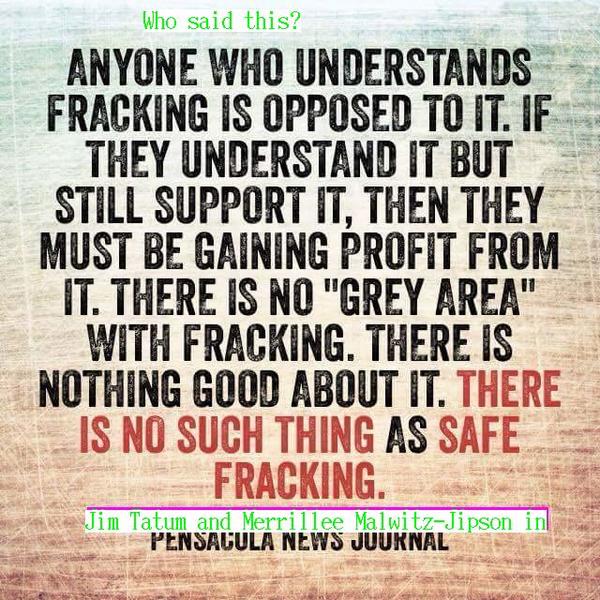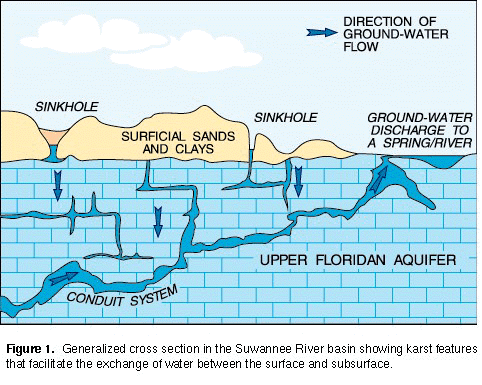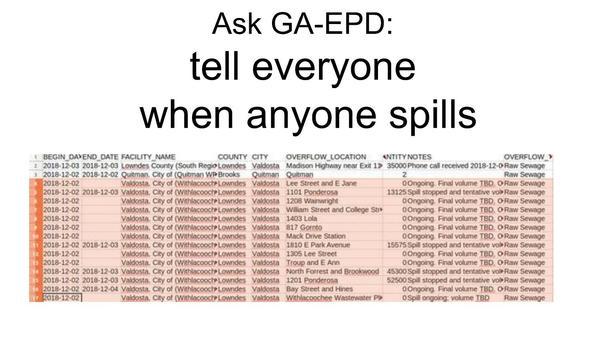Update 2019-06-08: Reroute due to lack of rain.
FOR IMMEDIATE RELEASE
Hahira, GA, February 13, 2019 — From next to the largest Suwannee River Basin city, Valdosta, to between some of the smallest, Mayo and Luraville, Paddle Georgia brings 300 people this summer to venture for the first time across the state line from Georgia to Florida, on the Little, Withlacoochee, and Suwannee Rivers, June 15 through 21, 2019.

WWALS Withlacoochee River outing 2017-06-24
“Five years ago I suggested our Withlacoochee River to Joe Cook for Paddle Georgia, and he went one better, adding the Suwannee River, past two of the few second-magnitude springs in Georgia, McIntyre and Arnold, and two of the famous first-magnitude Florida Springs: Madison Blue and Lafayette,” said Suwannee Riverkeeper John S. Quarterman. “Plus Spook Bridge and the orphaned railroad trestle near Madison, with many shoals and rapids at the GA-FL line! Special thanks to The Langdale Company for permission to take out just below Spook Bridge. Personally, I like that this paddle starts at my birthplace in Valdosta, Georgia and ends at my grandmother’s birthplace at the ferry site for Luraville, Florida.”
This event is organized by Paddle Georgia, with catered dinners and buses to and from the rivers. WWALS is assisting, for example by organizing the Spook Bridge takeout, and by pointing out many sites that non-locals might miss, ranging from springs, and Withlacoochee River agates, and the halberd-leaf rosemallow, whose blooms last only one day, to perpetual bothers such as Valdosta’s Withlacoochee Wastewater Treatment Plant, the Continue reading



![[DRAFT Areas of Opportunity, 4/6/2016]](https://www.wwals.net/pictures/2019-01-15--marion-co-fl-ear-amendment/06052018-MCBOCC-RESOLUTION-Rejecting-Alternative-Corridors-Proposed-for-Coastal-Connector-0005.jpg)



![[Dennis Price explains, 13:50:12, 30.57871, -83.05231]](https://www.wwals.net/pictures/2018-01-27--hike-dead-river-sink/20180127_135013.jpg)



